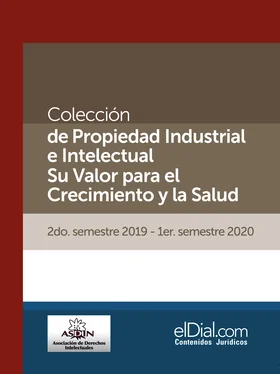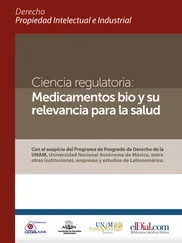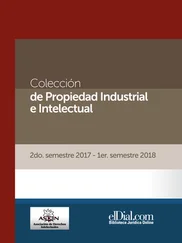Table 1
Composition of the interview schedules
|
Interviewee type |
Number of interviews |
| Industry |
Multinational companies |
9 |
| Local and SMEs |
3 |
| External(local policymakers and innovation experts) |
CROs |
2 |
| Researchers and academics |
5 |
| Total |
|
18 |
Source: Charles River Associates (2018)
Note: SME: Small and Medium Sized Enterprise, CRO: Clinical Research Organisation.
Scenario analysis and case studies
Following the analytical framework and the current relationship between environment and innovation and economic activity in Argentina, we undertake a scenario analysis on the potential benefits from an environment change and improvement across a range of metrics. Drawing from the literature, we selected the two case study countries that undertook a change across underdeveloped policy areas relevant for Argentina and assessed the impact on innovative activity and the broader economy. The two selected countries are:
South Korea: Comparatively slightly larger sized market (population of 51 million compared to 44 million in Argentina) and higher income level (GPD per capita of $29,000 compared to around $14,000 in Argentina). However, it is a suitable choice as it provides the example of a mid-size market that focused on developing local innovation through the ‘biotech plan’ in 1994 to ‘557 plan’ in 2008. This allows for an analysis of relevant policies and an appropriate timeframe to examine the impact of these on innovation.
Taiwan: Comparatively smaller sized market (population of 23 million compared to 44 million in Argentina) and higher income level (GPD per capita of $25,000 compared to around $14,000 in Argentina). However, Taiwan faced policy challenges on innovation and has more recently focused on developing innovative activity, through policy changes occurring in 2005 and 2007 respectively.
Metrics and data analysis
In the final step we modelled the impact of changes in the environment on Argentina. These included indicators of innovative activity (such as early research output and publications, clinical trials and patents) and economic activity (such as biopharmaceutical research employees and taxes). The baseline was developed using data retrieved from the literature review and data retrieved from international and local databases such as WIPO, World Bank and each country’s Ministry of Health website. In total, we collected over 30 government, academic or policy informing reports and over 10 publicly available national databases. This data was then used to conduct the impact and scenario analysis in Argentina.7
3. Background and review of evidence
In this section we discuss the theoretical framework of the relationship between the environment for innovation and the resulting activity and application through existing evidence in Argentina and the case study countries.
3.1. The relationship between policy and innovation
Prior theoretical and empirical studies have investigated the relationship between changes or strengthening policy framework, specifically for pharmaceuticals, and the level of innovative (pharmaceutical) activity across developed and developing countries. In one of the earlier studies, Aubert (2005) provides a conceptual framework for approaching the promotion of technological innovation and its diffusion in developing countries. It argues that, to promote innovation, the necessary package of support (including technical, financial, commercial, legal) and flexible, autonomous agencies adapting their support and operations to the different types of concerned enterprises, must be provided. It finds intellectual property rights (IPR) rights are vital, as patents provide protection for the invention enabling the investor to regain funds they risked for R&D. Otherwise, companies or investors will not risk capital to discover or develop a drug and as a result would not focus their R&D efforts in a country with weak intellectual property (IP) protection. Alongside proposing a framework, the report outlines proxy variables which can be used to measure the level of innovation in a country.8 More recently, Charles River Associates (2013, 2015) analysed the conditions for encouraging innovation in emerging markets looking across regions. The reports found that to develop the range of innovative activities from basic research to clinical development a jigsaw of policies is needed. It was noted that this would take considerable time, and key components are to have a consistent policy framework, a coordinated industrial and health policy, strong intellectual property and an environment that encourages partnership between the different stakeholders.9
Other studies have looked at distinct policy instruments, particularly IP protection. The relationship between IPRs and innovative activity varies depending on the methodology, whereby some papers have shown a positive relationship between patenting activity by foreign and domestic innovators and others have found a non-linear “U”-shaped relationship depending on the level of economic development of a country.10 11 12 Similar is the case for private sector R&D spending.13 However, for pharmaceutical patents, a positive relationship between the level of pharmaceutical protection and biopharmaceutical patents filed is broadly documented.14 15 The literature further finds that there is a positive relationship between the strength of IPRs and clinical trial activity, foreign direct investment (FDI) from multinational companies (MNCs), and the number of collaborations between foreign companies and local researchers, institutes and companies in developing countries.16 A significant portion of the literature documents a positive relationship between strong IPRs and wider economic indicators such as economic development (measured by GDP per capita), jobs created and the balance of imports and exports.17 For example, in a review of close to 200 studies on IPRs and economic growth, Falvey, Foster and Memedovic (2006) find that strong IP protection, generates economic growth.18 Improvement in the level of IP protection can also result in greater trade (imports and exports), particularly in the trade of knowledge-intensive goods, such as pharmaceutical products. Delgado, Kyle and McGahan (2013) investigate the change in imports and exports in developing and developed countries following the implementation of TRIPS, and find a positive influence of the latter on IP-depended products represented largely in biopharmaceutical and information and communications technology sectors.19 There is a general consensus that policy regarding IPRs are necessary but not sufficient to spur innovation and that the wider innovation ecosystem is important. A number of studies show that the impact of strong IPRs varies with the level of economic development in a country and the extent to which other factors such as skilled labour and scientific infrastructure are available, determining the compound relationship between IPRs and domestic innovation.20 21
In terms of the approach, many studies focus on case studies but a few use statistical approaches to quantify the relationship. A World Bank analysis (2004) on the relationship between knowledge, domestic innovation and economic development across 92 countries during 1960-2000 finds that domestic innovation, as measured by the number of patents granted by USPTO, is positive and highly statistically significant. The conducted regression analysis suggests that a one percent increase in the number of patents granted by the USPTO is associated with an increase in average economic growth of 0.19 percent.22 Another study by Berndt, Cockburn, and Thiers (2006) conduct an econometric analysis and find that the rising trend in clinical trials conducted in emerging economies at the beginning of the century is due to changes in the strength of patent protection for biomedical inventions. This activity is primarily driven by Phase III clinical trials.23 Similar approaches have been applied to FDI.24 25 To unpick the impact of different approaches, studies have used a wider set of controls. Qian (2007) evaluates the effects of patent protection on the pharmaceutical innovation for 26 countries with patent laws issued during 1978-2002. The analysis finds that national patent protection alone does not stimulate domestic innovation. However, domestic innovation accelerates in countries with higher levels of economic development, educational attainment, and economic freedom.26 Similar is the argument outlined by Kumar (1996), who finds that whilst the available infrastructure and local capabilities influence the probability of attracting R&D investments from MNCs, the overall strength of the IP protection also contributes to attracting foreign R&D investments in a sample of industrialised countries at the time (including Argentina, Brazil, Mexico, Hong Kong, Singapore, Taiwan and Israel).27 Finally, a number of papers attempt to holistically look at policy development. These find that long-term government strategies and coherent industrial policies can lead to local capacity development and encourage the sustainable development of the pharmaceutical industry and thus local innovation.28 29 30
Читать дальше












